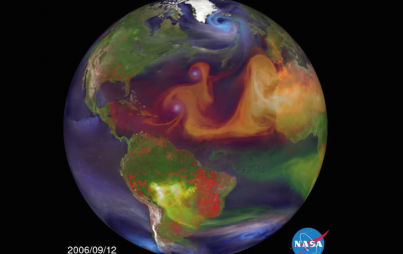
The notion of extraterrestrial life is a tantalizing one: it gives a sense of camaraderie in this universe, a sense of being less alone.
Well, extraterrestrial life might not be such a far-fetched idea.
Scientists at the National Aeronautics and Space Administration (NASA) used ground-based observatories and "measured water signatures in the Red Planet's atmosphere" by comparing the ratio of HDO (a variation of H20 that contains a hydrogen atom and a heavier isotope, deuterium) to H20 on Mars today. HDO gets trapped on Mars, while H2O leaves and goes into space.
Got that?
By comparing this ratio with the ratio in water "trapped in a Mars meteorite dating from about 4.5 billion years ago," the NASA scientists analyzed the atmospheric changes and water outflow from the planet.
These findings, according to NASA scientists, indicate that at one point, Mars might have had "enough water to cover its entire surface in a liquid layer about 450 feet (137 meters) deep," forming an ocean that filled most of Mars's northern hemisphere.
According to Michael Mumma, a senior scientist at the Goddard Space Flight Center, "[w]ith Mars losing that much water, the planet was very likely wet for a longer period of time than was previously thought, suggesting it might have been habitable for longer."
Does this mean that Mars had biological prospects?
"[T]his idea of an ocean covering twenty percent of the planet ... opens up the idea of habitability, and the evolution of life on the planet," says Geronimo Villanueva, a scientist at NASA and The Catholic University of America.
Watch below to learn alllll about it.


